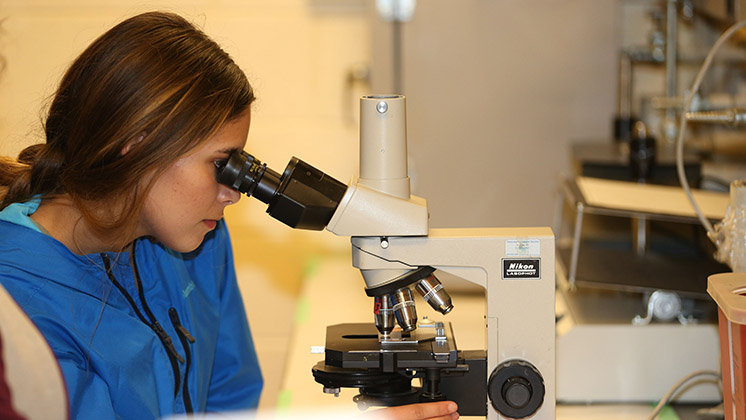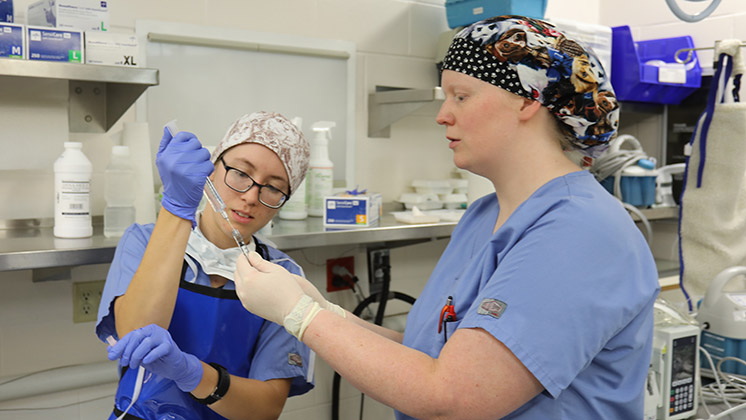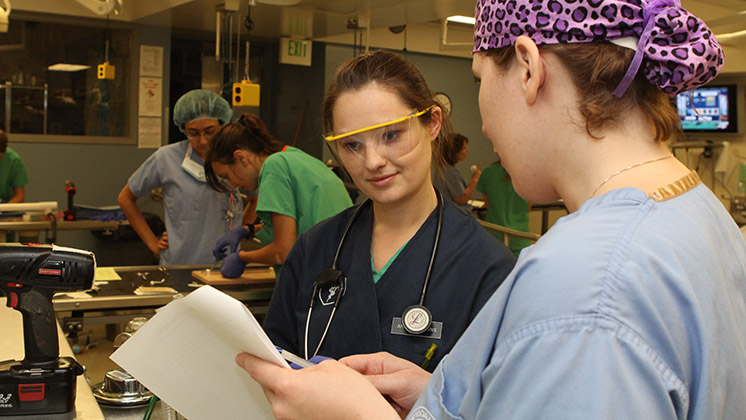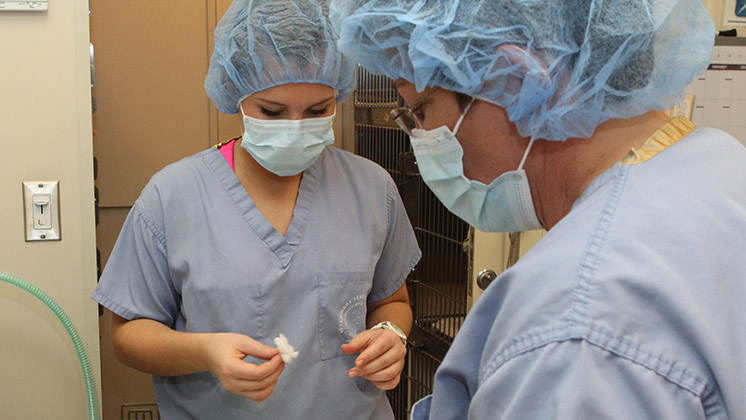
by Kelsey Wirt, MS, LVT and Josh L. Clark, MS, RVT
If you're considering becoming a veterinary technician, or vet tech, one of the key steps is completing a post-secondary educational program in veterinary technology (or veterinary nursing). Understanding the length of these programs can help you plan your journey into this career.
Most American Veterinary Medical Association (AVMA) accredited vet tech programs lead to an associate's degree, but some may offer a bachelor’s degree. These programs are typically completed about two years for an associate’s degree and four years for a bachelor’s degree when studied full time. However, the exact length can vary depending on several factors.
While many students complete their degree enrolled as a full time student, those who need to enroll part-time due to work, family commitments, or limited financial resources may take longer. Due to this, the length of a vet tech program can vary depending on the course load a student is able to enroll in each semester.
The overall structure of a vet tech program, whether it is in-person or online, may have an impact on your choices of being a full or part time student. Most in-person programs do not allow their students to enroll part time due to the nature of the curriculum and course offerings. Some vet tech programs offer accelerated paths or have intensive course schedules that allow students to complete their studies faster than the typical time frame. On the other hand, some programs, particularly those offered online or designed for working adults, are structured to allow a more flexible schedule.
While less common, there are also four-year bachelor's degree programs in veterinary technology. These programs offer more in-depth study and may be suited to those who aspire to attain advanced positions in the field, such as management roles or specialty areas. Read more about the benefits of earning a Bachelor’s Degree in veterinary technology.
In addition to the primary learning that occurs in the classroom (in person or online)t, most vet tech programs also include a required off-campus experience which provides an opportunity to practice and demonstrate hands-on skills in a veterinary setting. The timing of these experiences can vary among programs, however the AVMA requires a minimum of 240 cumulative contact hours to be completed.
Most vet tech programs are designed to be completed in about two or four years of full-time study depending on the desired degree. The exact timeline of completion can vary depending on the program structure, the student's course load, and other factors.
Find your calling as a Purdue Veterinary Nurse!
Not quite ready to apply? Connect with us to learn more.

Discover how long it takes to pay off vet tech school debt based on various factors including total debt, repayment plans, and post-graduation income.
Read more
Discover how to transform your vet assistants into vet techs, boosting both career growth and practice quality, while enhancing revenue opportunities.
Read more
Learn whether a vet tech degree can serve as valuable experience for aspiring veterinarians.
Read more